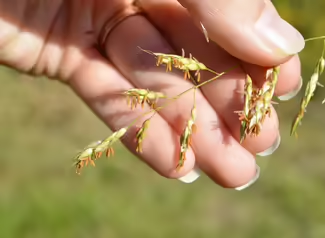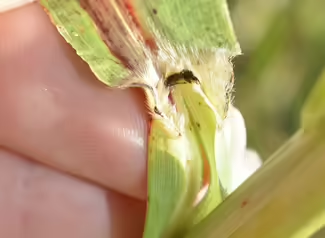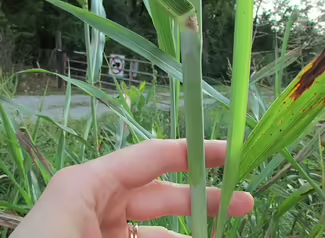
Invasive Johnsongrass
Johnsongrass (Sorghum halepense) is a warm-season grass that thrives in sunny, disturbed areas. Its extensive rhizomatous root system makes it difficult to control. Johnsongrass can reduce crop yields and outcompete native vegetation on roadsides and in prairie restorations.

Johnsongrass was introduced to the eastern U.S. in the early 1800s as a forage grass and has spread northwest. It is a common agricultural weed, often found in farm fields and along roadsides. It can also invade prairie ecosystems.
Regulation of Johnsongrass
Johnsongrass is listed as an invasive species and a noxious weed in Illinois. It is also listed an as invasive species in 23 other states.
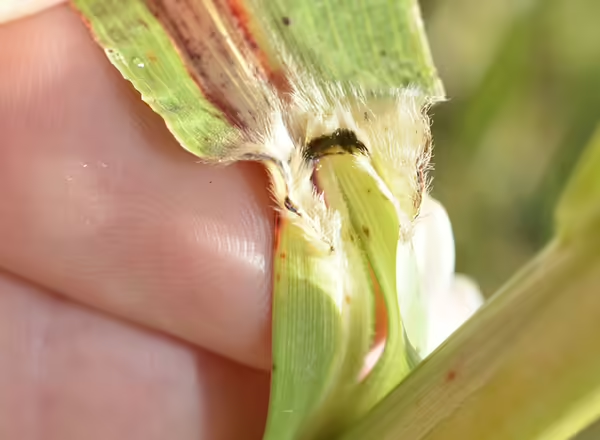
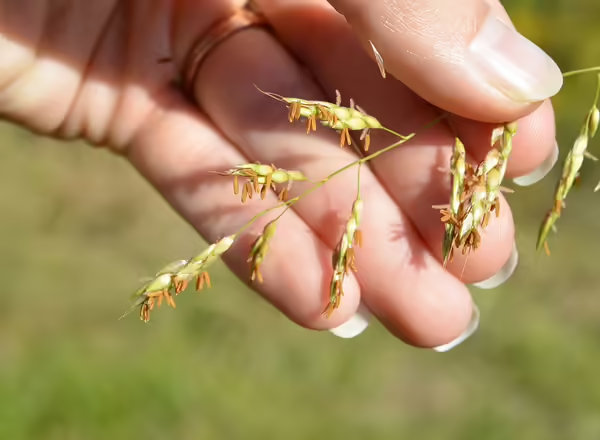
Johnsongrass is a robust rhizomatous grass that typically grows 4 to 8 feet tall. Its leaf blades are about 1 inch wide and can be several feet long. The leaves are very sharp to the touch and have a prominent white midrib. The ligule is made up of velvety hairs. The stems of Johnsongrass can be described as glaucous, which means they have a white coating that you can rub off. When it blooms, Johnsongrass produces a panicle inflorescence that can be more than a foot tall. Its spikelets, which have pointed tips and can sometimes have awns, can be found along branches. If you catch it in bloom, you can see white to pink stigmas and yellow to brown anthers.
Learn more about how to identify grasses on the Grasses at a Glance blog.
Johnson Grass, Sorghum halepense, is an invasive, warm season grass. It can be found in disturbed habitats in central and southern Illinois, and it can often be found in large patches since it spreads through rhizomes. This grass can grow four to seven feet tall. It has thick, glaucous stems,...
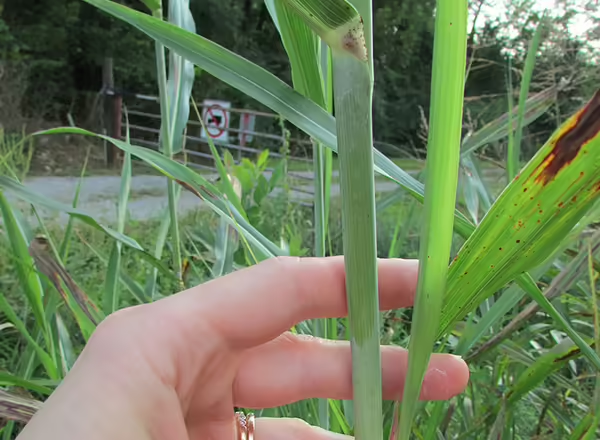
Johnsongrass is difficult to control because of its large rhizomatous root system.
- Mechanical removal: Repeated mowing can prevent flowering but will not eradicate the grass.
- Chemical control: Apply herbicide in June to August when the plant is at least 18 inches tall to when it just starts to flower. Apply glyphosate at 2% v/v in water. You can also use sulfosulruon at a rate of 1 to 1.5 ounces per 100 gallons with a 0.25% rate of nonionic surfactant. Always read and follow the herbicide label before treatment.
